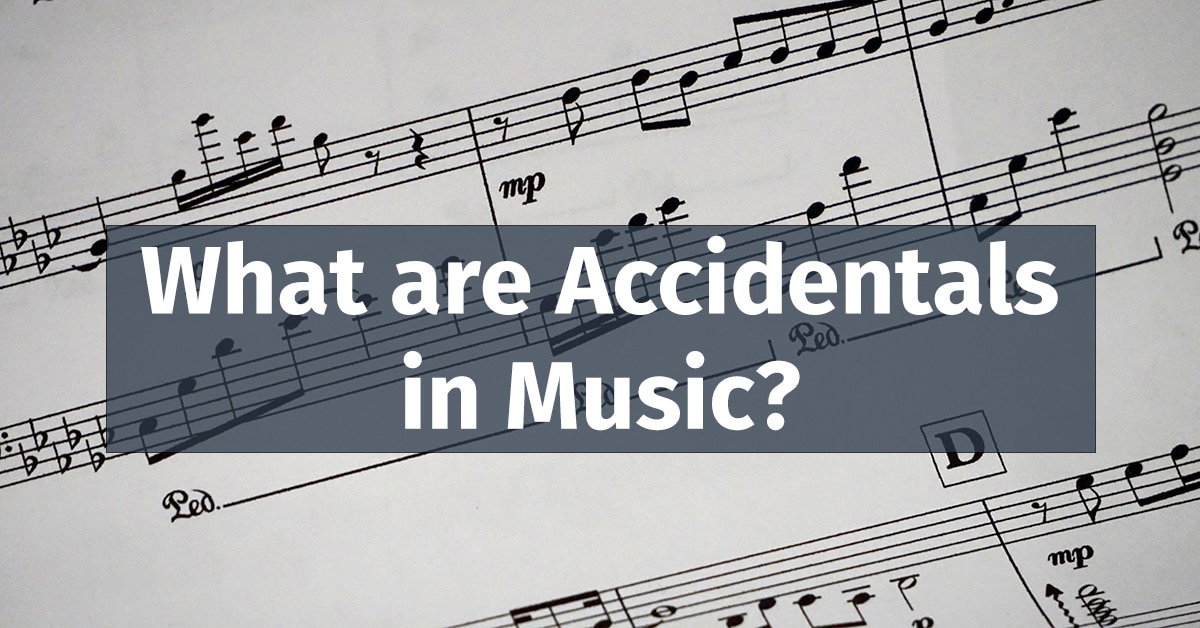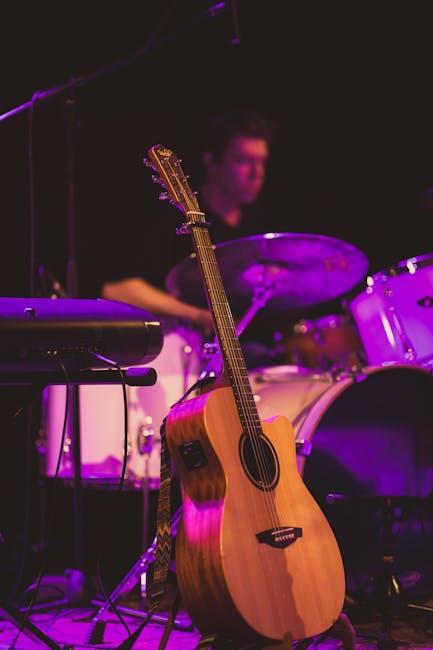Have you ever found yourself stuck playing the same old chords on your acoustic guitar, wondering how to take your skills to the next level? Well, fear not, fellow strummers, because I am here to show you the way to chord mastery and beyond! Whether you’re a beginner looking to expand your repertoire or a seasoned player in need of a refresher, mastering essential chords is the key to unlocking a whole new world of musical possibilities on your trusty six-string companion. So grab your guitar, loosen up those fingers, and get ready to take your acoustic game to epic new heights!
Contents
- 1 Unlocking the Basics: Major and Minor Chords for Acoustic Guitar Mastery
- 2 Exploring the Musical Landscape with Seventh Chords
- 3 The Power of Barre Chords: A Gateway to Full Neck Mastery
- 4 Incorporating Diminished and Augmented Chords for Emotional Depth
- 5 Transition Techniques: Smooth Chord Progressions for Fluid Play
- 6 Advanced Acoustic Artistry: Sus and Add Chords Unveiled
- 7 Fingerstyle Flourishes: Integrating Chords with Melodic Harmonics
- 8 FAQs
- 9 Wrap Up Your Chords Training and Strum Away!
Unlocking the Basics: Major and Minor Chords for Acoustic Guitar Mastery
So you’ve picked up your trusty acoustic guitar and you’re ready to conquer the world with your musical prowess. But first things first, let’s talk major and minor chords.
Major chords are like the flashy, over-the-top extroverts of the musical world. They’re bold, confident, and demand attention. In contrast, minor chords are the brooding, introspective introverts that lurk in the shadows. Learning how to switch between these two chord types will give your music depth and complexity.
Imagine strumming a G major chord and feeling the sunshine on your face—that’s the power of a major chord. Now, switch to an E minor and suddenly you’re transported to a dimly lit, mysterious tavern where secrets are whispered in hushed tones. Harnessing the energy of these chords will elevate your acoustic guitar game to new heights.
Practice makes perfect, so spend some quality time mastering major and minor chords. Experiment with different finger placements, strumming patterns, and chord progressions to truly unlock the potential of your acoustic guitar. Who knows, you might just become the next guitar hero of your generation!

Exploring the Musical Landscape with Seventh Chords
Are you tired of the same old boring triads? Are you yearning for a more adventurous sound in your music? Well, look no further, because we’re about to embark on a journey through the wild and wonderful world of seventh chords!
Seventh chords are like the cool, edgy cousin of triads. They add an extra layer of complexity and richness to your harmonies, turning your music from vanilla to Rocky Road in an instant. With that added seventh interval, they bring a whole new dimension to your sound, making your compositions stand out in a crowd.
There are several types of seventh chords to choose from, each with its own unique flavor:
- Major 7th – smooth and sophisticated
- Minor 7th – moody and introspective
- Dominant 7th – bold and sassy
So, hop on board the seventh chord train and let your musical landscape expand beyond your wildest dreams. Experiment with different voicings, inversions, and progressions to create your own signature sound. Before you know it, you’ll be exploring uncharted territories and composing music that will leave audiences begging for more!

The Power of Barre Chords: A Gateway to Full Neck Mastery
Are you tired of feeling like a musical amateur? Do you want to impress your friends with your guitar skills? Look no further, because barre chords are here to save the day! These powerful little suckers are the key to unlocking the full potential of your guitar playing. Once you master the art of barre chords, you’ll be able to conquer the entire neck of your guitar with ease.
With barre chords, you can play any chord in any key, giving you the freedom to explore new sounds and create unique music. Say goodbye to those boring open chords and hello to a world of endless possibilities! Plus, barre chords are like the secret weapon of the guitar world – once you have them in your arsenal, you’ll be unstoppable.
So, how can you harness the power of barre chords and achieve full neck mastery? It’s simple – practice, practice, practice! Spend time working on your technique, building strength in your fingers, and experimenting with different chord shapes. Remember, Rome wasn’t built in a day, and neither is a master guitarist. But with dedication and a sense of humor, you’ll be shredding like a pro in no time.

Incorporating Diminished and Augmented Chords for Emotional Depth
Have you ever felt like your music is lacking a certain emotional depth? Well, fear not my musical friends, because we have the solution for you: incorporating diminished and augmented chords!
Diminished and augmented chords are like the spices of the music world - they add that extra kick that takes your composition from bland to grand! These chords can evoke a wide range of emotions, from tension and unease to excitement and intrigue. So why settle for basic major and minor chords when you can spice things up with these bad boys?
Whether you want to add some drama to a ballad or give your rock song a touch of danger, diminished and augmented chords are the perfect way to amp up the emotional impact of your music. Experiment with different combinations and see how these chords can elevate your compositions to new heights!
So don’t be afraid to venture into the world of diminished and augmented chords – your music will thank you for it! Let your creativity run wild and watch as these chords add a whole new dimension to your compositions. Happy creating!

Transition Techniques: Smooth Chord Progressions for Fluid Play
Have you ever found yourself struggling to smoothly transition between chords while playing your favorite songs? Fear not, for we have some tips and techniques to help you achieve that fluid play you’ve been dreaming of!
First and foremost, it’s important to practice proper hand placement on the guitar. Make sure your fingers are properly positioned on the frets and that you have a good grip on the neck of the guitar. This will make it much easier to switch between chords with ease.
Another helpful technique is to visualize the chord shapes in your mind before you actually play them. This will help your brain and muscles memorize the positions, making it easier to transition smoothly between chords. And remember, practice makes perfect!
Don’t be afraid to experiment with different fingerings and voicings of the chords. Sometimes, a small adjustment can make a big difference in how smoothly you can transition between them. And don’t forget to have fun with it! Music is all about expression and creativity, so feel free to inject your own unique style into your chord progressions.
Advanced Acoustic Artistry: Sus and Add Chords Unveiled
So you think you know everything there is to know about chords, huh? You may have mastered your basic majors and minors, but have you dared to venture into the realm of sus and add chords? Prepare to have your musical mind blown as we unveil the secrets of these advanced acoustic artistry techniques!
Let’s start with sus chords, aka suspended chords. These bad boys are like the rebels of the chord world, always causing a bit of tension and intrigue. They replace the third of a major or minor chord with either the second or fourth note of the scale, creating a suspended, unresolved sound that will leave your listeners begging for resolution. Forget playing it safe with your typical major and minor chords – it’s time to spice things up with some sus action!
And then there’s add chords, the underrated heroes of chord progressions. Add chords sprinkle a touch of magic onto your standard triads by inserting additional tones beyond the typical root, third, and fifth. Want to add some jazzy flair to your playing? Try throwing in an add9 or add13 chord and watch as your music transforms into a mysterious, enigmatic masterpiece. Say goodbye to boring old triads and hello to the wonderful world of add chords!
So there you have it, folks – the wild world of sus and add chords unveiled! Embrace the chaos, experiment with these unconventional chord shapes, and take your acoustic artistry to the next level. Your fingers may struggle at first, but once you’ve mastered these advanced techniques, your musical creations will never be the same again. Happy strumming!
Fingerstyle Flourishes: Integrating Chords with Melodic Harmonics
During your fingerstyle journey, you may have been amazed by the mesmerizing sounds of harmonics. These ethereal tones seem to float above the strings, adding a touch of magic to your playing. Now, it’s time to take your harmonics to the next level by integrating them seamlessly with chords. It’s like adding sprinkles to your musical cupcake – a delightful finishing touch!
Imagine playing a chord progression and sprinkling in melodic harmonics that dance around the notes, creating a beautiful tapestry of sound. It’s like having a conversation between your chords and harmonics, each taking turns to shine and complement each other. Think of it as a musical partnership where both elements bring out the best in each other.
One tip to master this fingerstyle flourish is to experiment with different fingerpicking patterns that allow you to highlight the harmonic notes within the chords. Try plucking the strings in a way that emphasizes the harmonics, creating a subtle yet captivating effect. You can also slide into the harmonics or use them as a transition between chords, adding a touch of flair to your playing.
Remember, practice makes perfect, so don’t be afraid to try out new ideas and incorporate them into your playing. With a bit of creativity and a sprinkle of harmonics, you’ll be amazed at the unique sounds you can create. So, grab your guitar, embrace the fingerstyle flourishes, and let your chords and harmonics harmonize in perfect musical bliss!
FAQs
Why are mastering essential chords important for acoustic guitar skills?
Well, imagine trying to build a house without a solid foundation – it would be a disaster! Mastering essential chords is like building that strong foundation for your guitar playing. It sets the groundwork for learning more advanced techniques and allows you to play a wide variety of songs.
How can I make practicing chords fun and engaging?
Think of practicing chords like a mini puzzle game. Challenge yourself to switch between different chords quickly or try incorporating them into your favorite songs. You can even turn it into a competition with your fellow guitarist friends – loser buys the next round of strings!
What are some common essential chords every acoustic guitarist should know?
Ah, the classics! Make sure to master the likes of E major, A major, D major, G major, and C major. They’re like the bread and butter of guitar playing – versatile, reliable, and always satisfying.
How can I improve my chord transitions and make them smoother?
Practice, practice, practice! Start by slowing down and focusing on the movement between each chord. Use a metronome to keep a steady pace and gradually increase the speed as you get more comfortable. And remember, Rome wasn’t built in a day – neither are those perfect chord transitions!
Are there any tips for memorizing chord shapes more easily?
Get creative with mnemonic devices! Come up with silly sayings or images that help you remember the finger placements for each chord. You can even create your own chord charts with visual cues to make the memorization process more fun and engaging.
Wrap Up Your Chords Training and Strum Away!
Congratulations, you’ve now mastered the essential chords to take your acoustic guitar skills to the next level! With these chords under your belt, you’ll be strumming like a pro in no time. So, grab your guitar, hit those strings, and serenade the world with your newfound expertise. Remember, practice makes perfect, so keep strumming and keep rocking!
Now go forth and conquer the world of music with your newfound chord mastery. And who knows, maybe one day you’ll be giving lessons on how to strum like a true guitar hero!



